Guinea’s Only Travel Guide You Need For A Great Trip in 11 Easy Steps
- Destinations Africa
Cruisit Team
- October 16, 2022
- 0
- 4916
- 76 minutes read
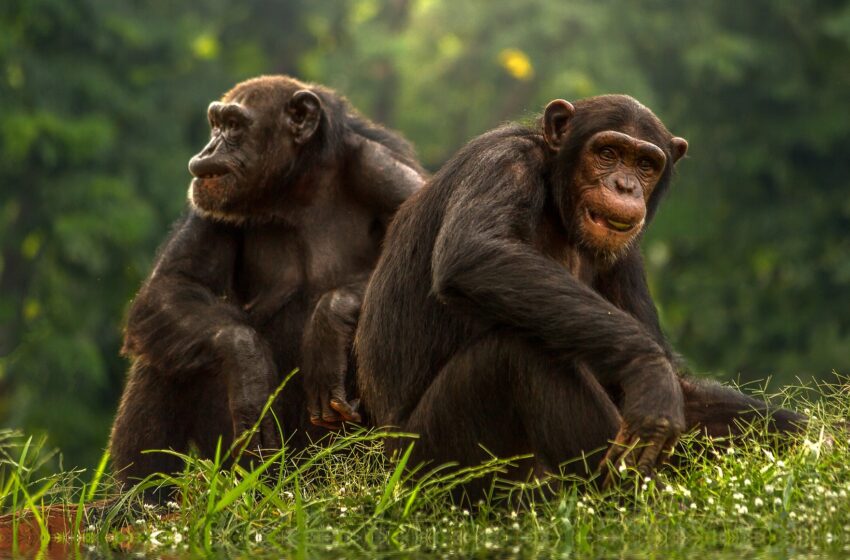
Evidence of human presence in Africa, of which Guinea is a part, dates back a lot more than 30 thousand years. Multiple groups, mainly hunter-gatherers, were dispersed over Guinea. In the period between 3000 and 2000 B.C., evidence have revealed, farmers in Guinea began cultivating their land. The lack of evidence for a distinct ancient civilization is a problem shared by many African nations. Humidity makes many of the collected samples unsuitable for analysis. A number of empires included Guinea in their territories before European colonization. Invasion by the Susu and Malinke (Maninka) started around 900 AD, pushing out the preexisting Baga, Koniagi (Coniagui), and Nalu (Nalou) peoples. Upper Guinea’s settlements became part of the Mali Empire about the 13th century, and by the 16th century the Fulani (Fulbe) had conquered the region of mountains in what is now western Guinea.
The Europeans did not leave a country unturned by their colonialism, and both Portugal and France had their fair share of trade, colonialism, and plunder. The Portuguese presence on the coast dates from the 15th century, when they developed a slave trade that would continue to affect Guinea until the mid-19th century. British and French trading interests on the coast played minor roles in the historical evolution of the Guinean interior until the Almamy (ruler) of Fouta Djallon placed his country under French protection in 1881. Eventually, it became a region of Franco West Africa in 1895. Despite several attempts by locals to overthrow the French government, Guinea was still incorporated into the French West Africa in the early 1900’s and was called French Guinea. During the time, railroad and port facilities were established, and the territory became a major export channel. Further industrialization came in the 1950’s, when Guinea discovered iron mining. French Guinea declared independence in 1958, taking advantage of the fall of colonial empires after WWII. However, power struggles plagued Guinea’s post-independence politics, leading to mismanagement, repression, numerous coups, and general instability. A new constitution was signed in 1990, and the first presidential election was won by Conté, who died in office in 2008. Succeeding heads of state managed to retain peace and a semblance of stability, though Guineans are still working towards escaping the poverty line as a whole. This nation is a constitutional republic nation with an independent presidential system, that since independence had only two rulers. In recent years, Guinea became involved in territorial struggles and quarrels over mineral wealth with neighboring countries. Unrest in Sierra Leone and Liberia has spilled over into Guinea on several occasions over the past decade, threatening the stability and creating humanitarian emergencies. Still, Guinea is one remarkable place that needs to be made known for the right reasons—its natural and cultural riches. The best of Guinea’s history is on display at Conakry’s National Museum, while other landmarks and remnants of the past are scattered throughout the country, awaiting discovery.
Located in the lush tropical southwestern portion of West Africa, on the coast of the Atlantic Ocean, lies the yet to be popular, Republic of Guinea, originally French Guinea. To the north lies Guinea-Bissau, to the east and southeast are Senegal, Mali, and Cote d’Ivoire, and to the south are Liberia and Sierra Leone. The country’s borders, which are a remnant of the colonial past when the area was divided among European powers, make little sense. There are many different peoples and languages living within these borders today, and the landscape varies greatly, from vast savannahs in the south to wooded mountains in the northwest. The Basse Cote, the coastal lowlands of Maritime Guinea, the mountainous Fouta Djallon, a highland section of Central-Guinea, the headwater of Niger, the Gambia River, Pongo, and the Senegal River, and the headwater of the Niger River all contribute to Guinea’s hot and humid climate and diverse environment. The landmass of the nation is 245,857 square miles in size. Around 10 million people call this area home. Located on the seashore, Conakry is the capital of Guinea. Since it is the largest town and primary harbor, it is the most prominent.
Despite Guinea’s troubled past, which includes the slave trade and extensive colonial rule, modern-day Guineans have overcome their differences to preserve the country’s rich cultural heritage and coexist peacefully. Culturally, the country is rich and varied because of the numerous different ethnic groups who live there. About 90% of Guinea’s population identifies as Muslims, making it an Islamic majority country. Though some people practice Christian and animist faiths, they are in the minority.
The culture of Guinea is diverse and interesting. They over looked differences and clung to their ethnic customs as they fought for independence from years of colonial rule. Because of its location in West Africa and its long period of French colonial authority, locals maintain strong ties to their own cultures while also displaying the impact of these other groups. The Peuhl or Fula live in the Fouta Djalon region; the Maninka inhabit the woods and savannahs of Upper Guinea; the Susus live in the capital city of Conakry; and smaller tribes like the Toma, Kissis, Kpelle, and Gerzé live elsewhere (in the forests and coastal areas).
“An untamed, West African country, home to breathtaking vistas that will immerse you in Mother Nature, from its far highlands to its pristine rainforests and plummeting waterfalls. With its welcoming locals and wide range of cultural practices, culinary options, and peoples, it’s impossible not to fall in love with Guinea.”
The island of Tombo is home to the country’s capital and largest city, Conakry, which is both attractive and rather cosmopolitan. Its urban areas may be underdeveloped, but the country’s many stunning natural features more than make up for that. The city of Conakry is well-known for its lively music scene and its lovely architecture. Many festivals are held each year in Guinea to honor music, which plays a significant role in the country’s culture. The ngoni, the balafon, the kora (a combination of a lute and harp), and the guitar are just a few of the string and percussion instruments that are commonly played by Guineans. In addition to the djembe, dunun is commonly used to accompany traditional music (drums). The fourth-largest city of Guinea, Kindia, is notably renowned for its singing and has received international acclaim for its music and dance.
Although, Conakry is a great time. There is a vibrant nightlife here, as well as a respectable number of restaurants dishing up primarily French fare and international standards. The city is charming despite its unremarkable hotel sector, which features anything from modest inns to dated branches of multinational brands.
If the chaos of Conakry gets to be too much, take a boat to the tranquil Iles de Los. These islands are the antithesis of Conakry, with their pristine sandy beaches, rustic guesthouses, and laid-back atmosphere.
Tourists visiting Guinea seldom venture outside of Conakry because of the country’s poor infrastructure. If you want to avoid bother from police officers, who you’re more likely to draw if you drive your own car, taking public transportation is a better option, despite its crowds, discomfort, and slowness.
Guinea isn’t for everyone, but explorers and curious minds will find enough to love here. Guinea is one of the least visited nations in Africa, despite having some of the continent’s most rewarding and spectacular features. Travelers may be put off by the difficulty of obtaining necessary visas. Despite considerable improvements in recent years, the government is still a de facto dictatorship, leaving its citizens with minimal liberties but providing a largely secure environment for tourists.
Visits to Guinea have the potential to be life-changing experiences for visitors. Your trip would be enhanced by getting to know the local customs and culture of the towns and countries you visit. Most people either never hear of Guinea or avoid it like the plague because of the ongoing Ebola outbreak and the country’s reputation for political unpredictability. On the other hand, Guinea has a lot to offer those who want to avoid the crowds and explore less-visited places. Republic of Guinea is a stunning and fascinating west African country that is well worth the effort to visit.
Don’t kid yourself into thinking things will be simple though. The first known case of Ebola in 2014 was reported from this country, which has been plagued by political unrest and periodic outbreaks of violence. The nation is extremely impoverished, and getting around outside of Conakry can be difficult due to rampant corruption and the intimidating presence of military checkpoints.
The beautiful and relatively undisturbed landscapes of Guinea are a major draw for tourists. All three of West Africa’s major rivers, the Gambia, Senegal, and Niger, have their sources here. Although Mount Nimba, the country’s highest peak, is the focal point of the beautiful Guinea Highlands, the Fouta Djalon highlands are well-known for their breathtaking scenery and excellent climbing. Kankan, Guinea’s spiritual epicenter, the highland town of Dalaba, the wild party city of Faranah, and the spectacular beaches of Cape Verga are just a few of the country’s other points of interest.
Though it is mostly unknown, Guinea is home to stunning natural features like the Fouta Djalon mountain plateau and the huge Sahelian plains and dense forests. For a long time, this area has been a magnet for overland drivers who seek the thrill of navigating their cars over obstacles like boulders and washed-out trails. Long treks through crashing waterfalls, soaring hills, and sleepy towns or chimp tracking through humid jungles are nirvana for those who seek solace in nature.
Guinea is a haven for animal lovers, since it is home to over a thousand distinct species. From lions and the elusive leopard to chimpanzees and killer whales approaching the coast to leatherback turtles hatching eggs, there is a wide variety of wildlife to encounter in Africa. The vast and untamed areas of Guinea are home to hundreds of creatures. Hundreds of different bird species will be visible to birdwatchers. The wildness of Guinea is characteristic of Africa, yet it is located in a less well-known and less frequented part of the continent. This makes exploration more difficult, but the environment is cleaner.
Inaccessible and under-investigated The history of French colonial rule in Guinea is extensive. Approximately 50 percent of the world’s bauxite is located in Guinea. Despite its high rankings in the gold, metal, and other jewelry sectors, the country has an extremely low quality of living index. Though it might be difficult to enter the country, tourists who are up for the challenge should not pass up the opportunity to see Guinea.
The nation of Guinea is endowed with some of the most breathtaking scenery imaginable. It has both vast rainforests with beautiful plant and animal life and some of the few remaining tropical dry woods in the world. The west is home to the beautiful Fouta Djalon Plateau, which is home to several waterfalls and some of the greatest hiking routes in all of West Africa.
Though tourism is not a major industry, the country is not being fully explored. The capital city, Conakry, is home to various affordable hotels with standard amenities. Hotels may also be found in Labé Kindia, Dalaba, and Katikan, however your options will be more limited the further out you travel from the city. To organize housing and transportation, careful forethought and prior preparation are required.
Although Guinea is woefully equipped for tourists, the country’s hidden treasures are sure to pique the attention of the most fearless adventurers. While the capital may be short in landmark buildings, it is surrounded by beautiful scenery and parks. The magnificent neighborhood of Faranah is well known as the “party town” of the country, thanks to its abundance of bars, clubs, and restaurants, as well as its majestic mosque, which forms a stunning silhouette against the exquisite sunset.
Staying on the move will allow you to take advantage of all that Guinea has to offer visitors. This Cruisit Guinea travel guide provides an itinerary that strikes a balance between leisure and exploration. Arrive in this untapped paradise in West Africa, with a colonial vibe, and enjoy it to the fullest. The following itinerary for Guinea is tailored to the country’s peak tourist season but can be enjoyed during the shoulder months. With days spent in ancient parts of town in the company of legend, or surrounded by lush peaks and dramatic highlands and picture-perfect scenery, and hundreds of species to spot while you explore on your hikes, Guinea will fulfill your wildest dreams.
Moreover, we will provide you with all the information you need to go across Guinea with ease by providing you with a comprehensive travel guide. As you read on, you’ll learn about the best of what Guinea has to offer—its towns, sights, transit options, and more. If you’re pumped up enough, then let’s get started!
- Get some exercise on the Fouta Djallon hills.
- Unwind on the sandy shores of Îles de Los Grand Mosque of Conakry.
- Visit the countryside and botanical gardens in Conakry.
- Visit the National Museum to learn more about the country’s history and culture.
- Take in the stunning Conakry Cathedral.
- See the magnificent Mosque, stroll the boulevards dotted with fashionable cafes, and relax by the river at Faranah.
- Enjoy the outdoors on the excellent hiking routes of the Fouta Djalon mountains.
- Visit the Ratoma settlement and its enigmatic Kakimbon Caves.
- Check out the wares on sale in the Katikan open-air marketplaces in Kindia.
- Visit the stunning Le Voile de la Mariée, a gushing waterfall that plunges 230 feet into a valley of lush flora.
- Observe the local fauna in the Tinkisso River Valley, not far from the Mali–Port du Boulbinet border.
- The official language of Guinea is French. Malinké, Kissi, Toma, Fula, and Kpelle are just a few of the regional languages that may be found there.
- Don’t be shy about approaching locals; people in Guinea are known for their friendliness, generosity, and helpfulness.
- Travelers should be aware of the potential for violent and petty crime when in Guinea. Stay with your group at all times and never venture out alone, especially at night.
- It is mandatory to present a yellow fever vaccination certificate upon arrival and prior to visa issuance.
- Almost all foreign tourists are required to get a visa before entering the nation.
- SIM cards from major carriers including Digicel, Vodafone, and Telikom can be purchased at most major airports.
- Consider purchasing insurance; it might save your life in a sticky situation. The two of us pray you never have to use it.
- Rising political tensions in Guinea have raised concerns that the security situation there might deteriorate rapidly. If you must travel, do so, but do so with a group instead of alone.
- Stay away from the borders with Mali, Côte d’Ivoire, Liberia, and Sierra Leone.
- Stop thinking about going to Guinea to get your money back or exact retribution. It’s possible that some people believe they can handle becoming a victim of a scam in a country like Guinea, which is in West Africa but is really the source of many such schemes. I wouldn’t recommend going there to take out your frustrations on anyone.
- Even after Guinea was proclaimed Ebola-free in 2016, the disease continues to resurge.
- Be ready to pay in cash for any emergency care you may require.
- As a result, curfews, no-go zones, and other forms of tethering will likely be enacted. As a result of political turmoil, flights may be canceled unexpectedly and borders may be sealed. A small number of commercial flights are now available. For further information, please contact your airline.
- It’s not a good idea to hit the road, especially after dark. There are frequent robberies, accidents, and gas shortages.
Crime & Scams in Guinea
While most Guineans are kind and helpful, you should still be aware of the possibility of danger, like anywhere in the world. Both violent and petty crimes occur, and cons are also a problem. Do not take anyone’s help until you specifically ask for it; since it’s almost always a scam to steal your money. Keep cars locked, with the windows up, at all times. Don’t go for a stroll in the city after dark or during a blackout; you need to be more cautious. Due to ongoing political upheaval, Conakry, Guinea’s capital, is not a secure destination for tourists. The situation might rapidly worsen without any prior notice. Avoid any unnecessary strolls and take extra precautions to be alert and observe local media. Protests have turned violent in Conakry and other cities, resulting in multiple casualties. Stay away from any public gatherings or protests.
Avoid going too close to the Mali border. There is a significant possibility of kidnapping, terrorism, and other acts of banditry in these regions. Due to cross-border military and rebel activities and tensions between ethnic groups that might become violent, you should reevaluate your need to go to the border areas near Côte d’Ivoire, Liberia, and Sierra Leone as well. Highway robbers are another difficulty with transportation. Moving from one town to another is usually dangerous due to the poor state of the roads and the recklessness of the drivers on them. Flooding, earthquakes, and tsunamis are just some of the natural threats that Guinea faces.
Given that Guinea is not a secure destination for any kind of tourist, but it is especially true for solo women, it is important to take precautions. If you are a woman planning to go to Guinea alone, it is imperative that you take all necessary safety measures, adhere to all relevant rules, and pack appropriately stocked emergency supplies as well as points of contact, like your embassy.
Be especially cautious if you are in public places frequented by foreigners, near official buildings, popular tourist sites, or on public transit. Avoid going to slum regions of the city. Take extra precautions on city streets, especially after dark or if you are alone. Carry no significant sums of money or wear expensive watches or jewelry. Avoid using your phone while walking down the street.
Healthcare in Guinea While Traveling
When the Ebola and then the COVID epidemics hit, Guinea’s healthcare system buckled under the strain, even though community-based healthcare saw a significant rise in accessibility as a result of government initiatives to improve healthcare. Donka Hospital, the largest public hospital in Guinea, is one of the country’s three major hospitals along with Clinique Ambroise Paré and Ignace Deen Hospital.
Although Guinea experienced an Ebola epidemic in 2014, the country has been declared Ebola-free since 2016. Always check that your immunizations are up to date before leaving on a trip. Chickenpox (Varicella), diphtheria-tetanus-pertussis (DTP), influenza (flu), measles-mumps-rubella (MMR), polio, hepatitis, typhoid, and shingles vaccinations are among the most widely prescribed vaccines in the world. A rabies shot is something to think about if your plans include interacting with wild animals. Insect-borne illnesses such as yellow fever, malaria, and filariasis are widespread. Be sure your lodgings are free of insects. Put on some bug spray. Due to the high prevalence of HIV/AIDS in the country, visitors are advised to take all necessary safety measures and to insist, if receiving medical attention, that only brand-new, disposable supplies be used.
When visiting Guinea, you are not legally required to purchase travel medical insurance. So, it is always important to have comprehensive medical coverage when traveling because you never know what you could encounter while overseas, especially if in the event of an emergency, a medical evacuation is a must for your safety.
Only eat foods that are cooked and served hot, avoid food that has been sitting on a buffet, and eat raw fruits and vegetables only if you have washed them in clean water or peeled them.
Only drink beverages from factory-sealed containers, avoid ice because it may have been made from unclean water, and only drink pasteurized milk.
Wash hands often with soap and water for 20 seconds, especially after using the bathroom and before eating. If soap and water aren’t available, use an alcohol-based hand sanitizer that contains at least 60% alcohol. Also, keep your hands away from your face and mouth.
Most of Guinea enjoys a tropical climate, especially the coastal region and inland areas. The weather is pleasant all year long, with the highest temperature in April and May of 39°C, and lows can reach 16°C in December to March. The rainy season typically lasts from April to November. In the Haute Guinee region (near the border with Mali) temperatures are warmer, and the rainy season is shorter. The dry season, which is from around mid-October to March is the best time to visit.
Shoulder Season
Between April and around midway through May, Guinea experiences its brief shoulder season. This time frame bridges the two extremes of the country’s annual climate extremes, the dry and rainy months. Cloudier and sunnier spells are expected to alternate now that the weather is changing. Expect highs of 30 degrees Celsius and lows of 25 degrees Celsius, with humidity making life unpleasant. Some days, the temperature climbs to a miserable 39 degrees Celsius.
High (Peak) Season
Around the middle of October and the beginning of March, Guinea has its modest peak tourist season. This is the time with the fewest showers and the clearest sky, although it may still become quite hot, with highs of 31°C and lows of 24°C; the humidity is slightly more manageable than in the low season, but it can still get quite oppressive. From December to March, temperatures can occasionally exceed 38°C during heat waves. After the rainy season ends and before the dusty harmattan winds obscure the amazing views, November and December in Guinea are the finest months to visit. That’s also when you should go sightseeing in Guinea. Hot and humid, but drier than the rest of the year. At this point, tours organized by tourist agencies will begin to scout the area. Little to no precipitation falls on the country. After rains, but before sandy harmattan waves, the Fouta Djalon is at its best. Sea turtles come ashore on the island of Bijagos to lay their eggs in the month of February.
Off-Season (Low Season)
Between the end of May and the middle of October, Guinea has its low season, also known as the rainy season. The majority of the country’s annual precipitation falls at this time of year, when sky are often overcast. Temperatures in this month average around 28 degrees Celsius, which is not as hot as the busiest month, but the humidity may make things intolerable. As an additional reference, August and November can see lows of 21.1°C and highs of 31.5°C. Though it’s true that during the rainy season, many secondary roads become inaccessible, the positive effects of the rain for the environment outweigh the negative. It was possible to witness turtles laying eggs on the Island of Bijagos throughout the month of August.
Most international flights to Guinea depart from European hubs including Paris, Brussels, and Brussels to facilitate connections to other parts of the world.
By Plane
Conakry International Airport (CKY), also known as Ahmed Sékou Touré Airport or Gbessia Airport, is the major airport serving Guinea. It is located about 15 km southwest of the city of Conakry. There are thirteen airports in thirteen different countries that offer direct flights to Conakry. Dakar, Bamako, Abidjan, Paris, Casablanca, and Lisbon have the most direct flights, with the others farther down the list.
By Car
From neighboring nations including Sierra Leone, Guinea-Bissau, Senegal, The Gambia, Mali, and Liberia, you may drive to Guinea in anywhere from four to twenty-one hours. To be clear, it is not a question of whether or not you can drive; rather, it is a question of whether or not you can drive safely. It can be difficult and time-consuming to go across the dangerous and militarized zones that surround international border crossings. Along the frontiers of Mali, Ivory Coast, Sierra Leone, and Liberia, banditry, kidnappings, and terrorist-related occurrences are unfortunately all too prevalent.
By Boat
Despite being more suited to transporting cargo than people, you may ride a local boat from Sierra Leone to Conakry. Remember that the entire West Coast of Africa is rife with piracy, and that encounters with pirates are not out of the ordinary. Ships in Guinean seas have reportedly been the target of piracy and violent robbery.
You can’t rely on the sporadic schedule of the country’s transportation systems because of how little developed they are. Still, taxis are easy to get by, and Bush cabs serve as the main mode of transportation.
By Car
In order to fully experience a foreign destination, packing a car along on your vacation is a great idea. But in countries like Guinea, you might want to think about that choice for two important reasons. The first concern is security, as travel between cities sometimes involves risky situations including robbers, terrorists, and kidnappings. The poor state of the roads in Guinea is another consideration for automobile rental. Between Conakry and Kissidougou, as well as Boké and Kamsar, you’ll find paved roads in generally decent shape. Nonetheless, many highways inside and between cities are in disrepair. Most other roads are unmaintained and have become overgrown with vegetation. Road dangers can be caused by livestock, free-roaming animals, and people, especially at night when most roads are dark. Wet weather makes it nearly hard to cross roadways. Another annoyance for commuters is the frequent deployment of police, military, and local militia roadblocks from 10 p.m. to 6 a.m. The option is to hire a driver or a guide in advance. Many of Guinea’s finest hotels provide the services of dependable drivers.
By Train
Some of Guinea’s railroad networks have been renovated, but the sole train that provides passenger service is the Conakry Express, which serves commuting passengers in the capital city.
By Taxi
It is possible to hail a taxi in Guinea; however, it is strongly advised that the fare be negotiated prior to entering the vehicle. There is also the option of using a bush taxi, which is an excellent option for traversing shorter distances.
By Bus
Even though there is no public transportation in Guinea, there are local vehicles that can pick people up and take them to a variety of locations. Even though they are in rough shape, they are sufficient for the needs of the residents as well as those travelers on a tight budget. Take into consideration that they are typically very crowded.
By Boat
Ferry travel is popular and safe, whether you’re headed to the lovely Loos Islands from Conakry or vice versa.
SIM Cards & Calls in Guinea
You may purchase SIM cards from any of the three major mobile service providers in Guinea: Orange, MTN, and Cellcom. SIM cards typically come with a monetary value and extras when purchased. You may obtain a week’s worth of service with up to 1.3 GB of data, minutes, and SMS for as little as 14,000 GNF ($1.8). The availability and cost of such services, however, may vary by provider. With the largest network coverage area and the highest download speeds, Orange is the finest prepaid choice in Guinea. Orange offers weekly internet passes ranging in price from 14,000 GNF ($.8) for 800 MB to 31,000 GNF ($3.5) for 1.8 GB. A sim card may be purchased at the airport or in town at any of the authorized retailers. It is important to note that the only place in Guinea where most carriers offer adequate service outside the capital city of Conakry is on the outskirts. Your options for connectivity may be limited to 2G or 3G only the further from civilization you travel.
Alternatively, you may also get a prepaid eSim card from companies like Airalo, SIMCorner, HolaFly, or Nomad. All the providers offer data-only plans that may be used with an eSim-enabled phone, so make sure your phone is compatible. It is also possible to sign up for a Solis WiFi Hotspot. Check before you travel because they only serve select areas. Airalo provides the most extensive coverage of over 180 nations.
Local Internet & WiFi in Guinea
Staying online or finding a hotspot in Guinea might be challenging, as fewer than 25% of the population has access to the internet. However, these days you can stay practically anywhere and have free internet access. While mobile internet speeds in Guinea can reach up to 6 Mbps, the country’s fixed-line connection tops out at a measly 2 Mbps. This might be adequate for more mundane tasks like texting, but it certainly won’t cut it when it comes to apps that require a lot of data, like as social media.
Top Places in Guinea

Grande Mosquée de Conakry
The Conakry Grand Mosque is near to the Donka Hospital and east of the Botanical Garden in Guinea. Under Ahmed Sékou Touré, Saudi King Fahd funded the mosque’s construction. They opened in 1982. It’s Sub-Saharan Africa’s largest mosque and Africa’s fourth largest. The mosque holds 10,000 men and 2,500 women. The mosque’s esplanade can accommodate 12,50 people. National heroes Samori Ture, Sékou Touré, and Alfa Yaya are buried at the mosque’s Camayanne Mausoleum. Despite a 2003 20 billion GNF donation from Saudi Arabia, the mosque needs maintenance, running water, and power. On Friday, October 2, 2009, the 58 September 28 victims were buried in the mosque’s esplanade. Many mourners and protesters clashed with police. Police reaction caused mosque tear gas.
Iles de Los
The Iles de Los, a smattering of islands off the coast of Conakry city, provide a glimpse of what Guinea may or would be like if its political life were less unpredictable. Extending over Tamara, Roume, and Kassa (along with a few tiny add-on isles), the archipelago is a region of sloping golden dunes and mangroves, lanky palm palms, and the saline froth of the Atlantic Ocean. Many of the best beaches in the region may be found around the coasts of Ile de Roume and Kassa, where you’ll also find a few resort hotels and quick boat access from the capital’s jetties.
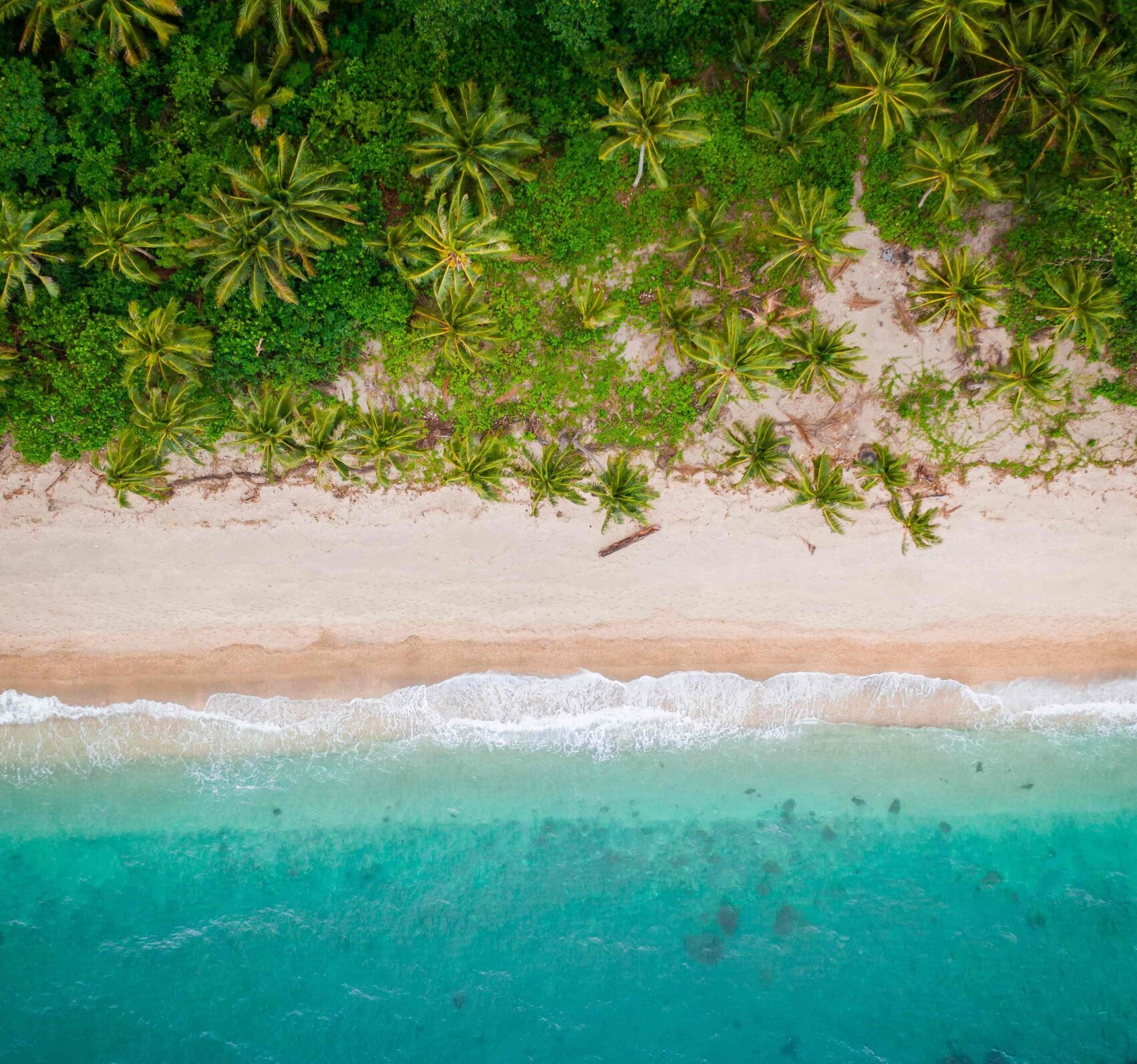
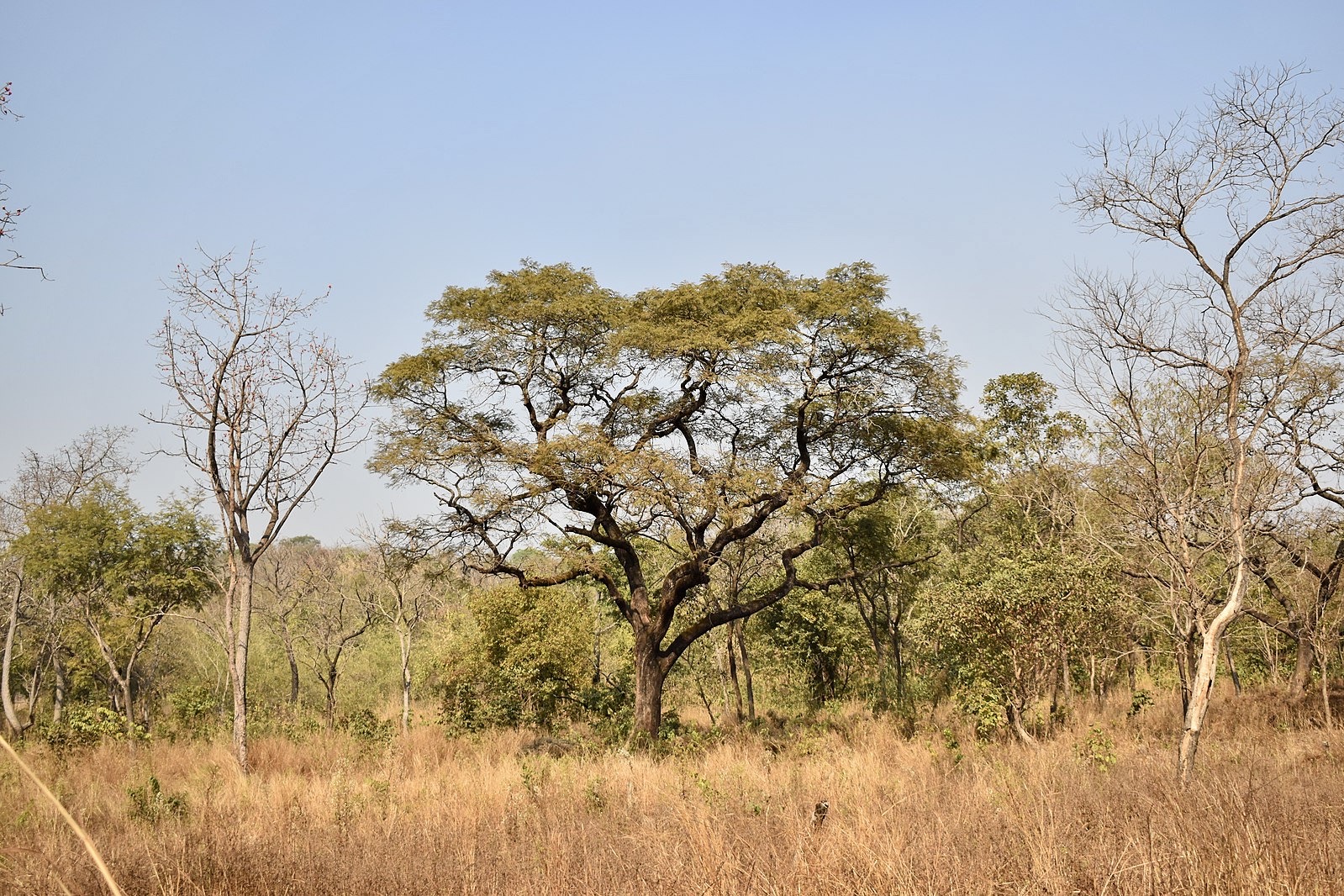
National Park of Upper Niger
The National Park of Upper Niger (or National Park Haut Niger, as it is known locally) dominates a massive 6,000 square kilometers in the heart of eastern Guinea and is presently at the forefront of West African conservation efforts. Part of the country’s only remaining dry forest may be found in a wide region characterized by riparian forests and savannah, twisting rivers, and montane thickets. The area is home to chimpanzees, Gambia mongooses, West African manatees, and inquisitive big pangolins, all of which are tucked away in the dense foliage. It is the most popular tourist destination in the country, especially among nature enthusiasts.
Mount Nimba
The wild and untamed Nimba Range includes the peak of Mount Nimba, which straddles the tristate junction of Guinea, Ivory Coast, and Liberia in the country’s far southeast. From the surrounding swaying savannah it rises like a vast, grass-covered backbone, crowned with emerald highland meadows and lawns of green that are frequently well above the skies. The region is now a haven for ecotourists and has been designated a World Heritage Site by UNESCO to safeguard the viviparous toads, zebra duikers, pygmy hippos, and other bizarre and endangered species that call it home.
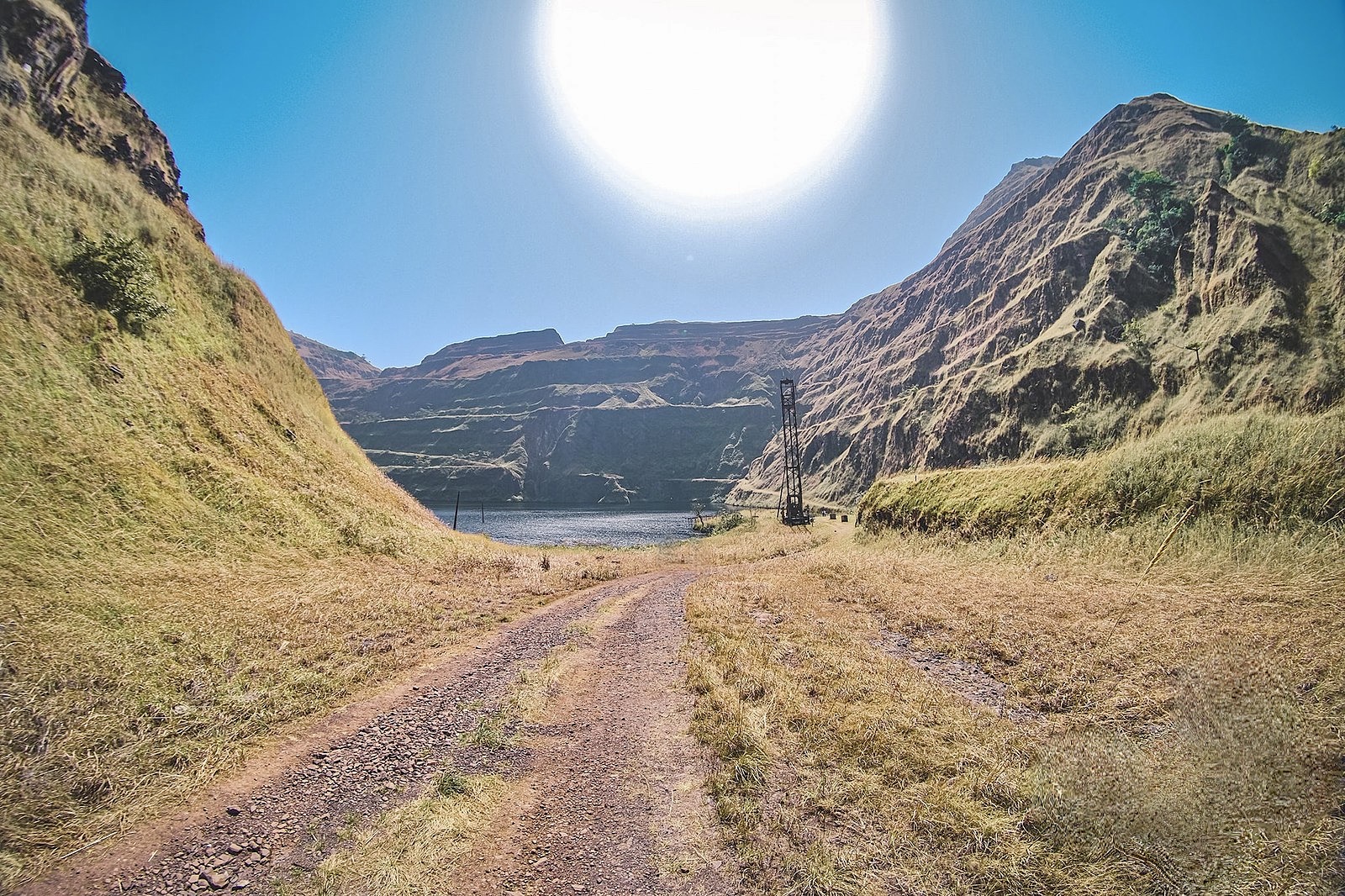
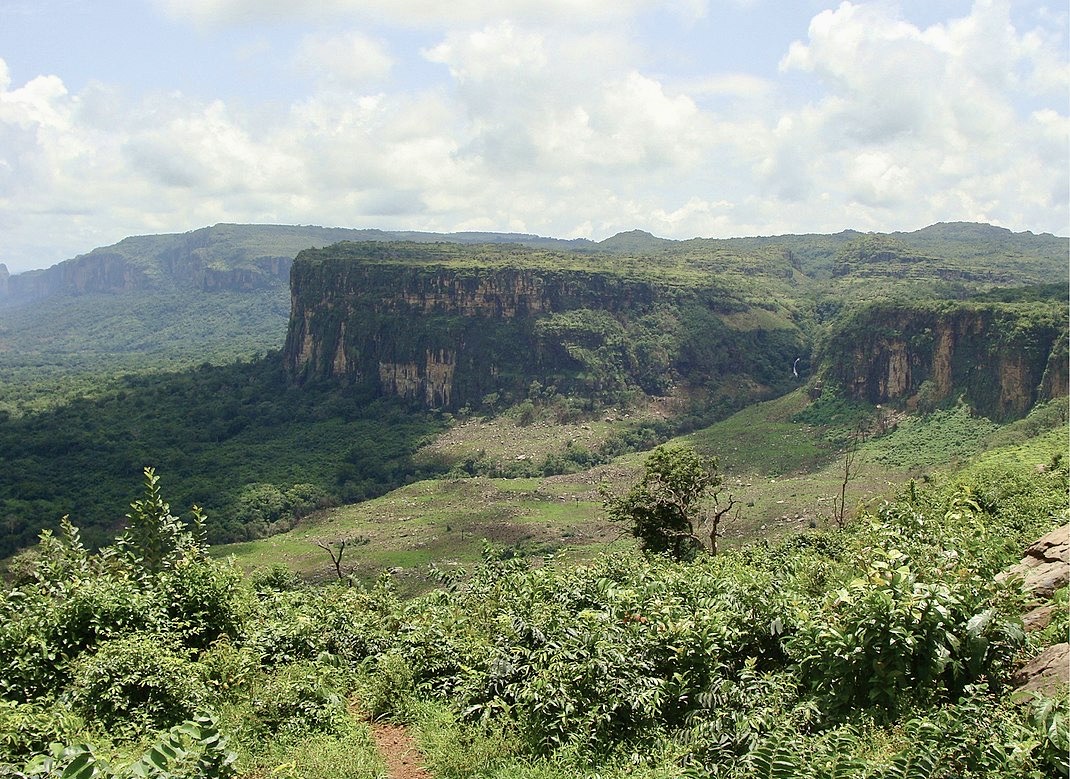
Fouta Djallon Highlands
The enormous area known as the Fouta Djallon is mostly covered in a blanket of green, with the occasional hoodoo and rugged protrusion of old sandstone rock. This lush environment with jungle-covered valleys and lichen-speckled stones occupies the geographic center of Guinea and is often regarded as among the most picturesque in the country. Petteh Djiga is a popular destination for hikers who are interested in seeing the headwaters of the Gambia and Senegal rivers, meeting members of the rural agricultural villages of the Mande peoples, and so much more.
7-day Itinerary in Guinea
Day 1
Arrive in Conakry
Conakry, city of one of West Africa’s most haphazard states, is everything you’d expect from a capital representing one of the continent’s most haphazard nations, with its patchwork of markets (just check out the colorful veg in Madina bazaar), beer bars, and Malinke music dives. Conakry is home to some beautiful and historically significant attractions, including St. Mary’s Cathedral and the National Museum of Guinea.
Arrive in the Guinean capital of Conakry. The capital and largest city of Guinea is also the seat of government. Take a cab from the airport to your hotel, settle in, and relax for the night. The National Museum is worth a look if you get there early enough. In any case, you can do so on your way back to Conakry at the end of your trip.

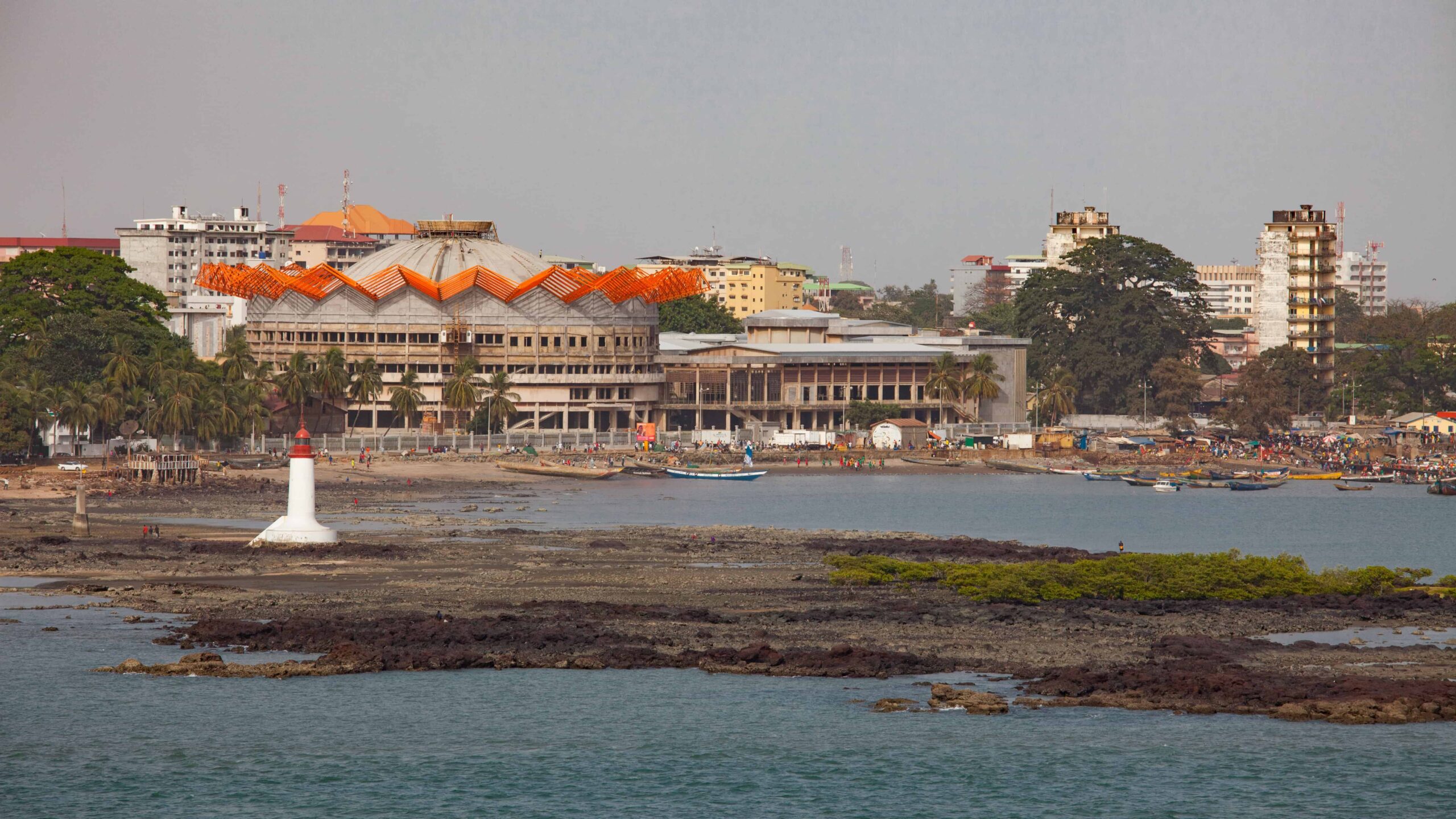
- Backpacker:
- Budget:
- Mid-range:
- Luxury:
When it becomes dark, a foreign city may be twice as dangerous - especially if you don't understand the language and are unfamiliar with the area. There is some reason to be alarmed about walking alone in the city since there is a somewhat high crime rate in Conakry, with some of the most prevalent with tourists are pickpockets. You could walk safely at day, but be especially wary while walking at night and be alert in crowded areas or unlit alleys or streets. You can always take taxis, if you don't feel comfortable, Be wary of petty crime by taking precautions mentioned in the safety section above.
From the Airport to Conakry's Center

Day 2
Get Enchanted in Dubreka
Seeing “dog which smokes” at Dubreka, a short drive north of Conakry, is a great way to spend the day, so get there after breakfast. The dog in question is not a real dog, just to be clear. Keep going till you reach the Cascades of Soumba. Wildlife-filled landscapes will greet you on this guided tour before a night of local cuisine and performances. You’ll spend the night in Cascades de Soumba. You’ll get in the car and head to Dubreka, where you can spend the day exploring the Island of Dog Which Smokes. You will next go to one of Guinea’s most popular tourist attractions, the Cascades de soumba. After supper, you’ll be treated to some live performances by local musicians.
Day 3
Exploring Bel-Air
Leave for Boffa, a fishing harbor, and the nearby town of Farenya after breakfast. It is well-known that many long-time South Carolinians’ ancestors were brought there as slaves, and that this community is closely connected to their descendants. Explore the town and its palace, which is home to Queen Nyara Belly. Learn more about the insurrection by visiting the museum honoring the slaves who participated. Visit the cities of Dominiah, Kossisi, and Meyenkhoure, all of which played important roles in the Atlantic slave traffic, before heading to Bel-Air for a meal. A tour to Boffa and Farenya Village will be provided to you in the morning. The people of South Carolina, in the United States, gave birth to the hamlet, and its history is full of glory. This is where you get to tour Queen Nyara Belly’s Palace. After that, you’ll go to a site where slaves were bought and sold repeatedly. Next, proceed to Bel-Air.

- Backpacker:
- Budget:
- Mid-range:
- Luxury:
When it becomes dark, a foreign city may be twice as dangerous - especially if you don't understand the language and are unfamiliar with the area. There is some reason to be alarmed about walking alone in the city since there is a somewhat high crime rate in Bel-Air, with some of the most prevalent with tourists are pickpockets. You could walk safely at day, but be especially wary while walking at night and be alert in crowded areas or unlit alleys or streets. You can always take taxis, if you don't feel comfortable, Be wary of petty crime by taking precautions mentioned in the safety section above.
From the Conakry to Bel-Air

Day 4
Day Trip to Sogbane
Visit the e-markets of Sogbane, located in this modest fishing community. Tonight’s meal will feature a traditional show from the area. This morning, you’ll go to Sogbane, a tiny fishing hamlet with several marketplaces. You can gain insight into the everyday lives of the locals through this experience. After supper, take in a special cultural performance.
Day 5
Kondeyah’s Charm
Leave for Boffa in the morning after breakfast. Stop through Boffa’s attractions on your way to Kondeyah (Kindia). Dinner and a tour of the Kondeyah ranch. Stay in Mokebounyi tonight to rest, enjoy food, and a traditional show. A morning trip to Boffa Town is in order. As you go to Kindia, you will have lunch at the ranch after touring the town. Later in the day, take in the attractions of Kondeyah on a guided tour.
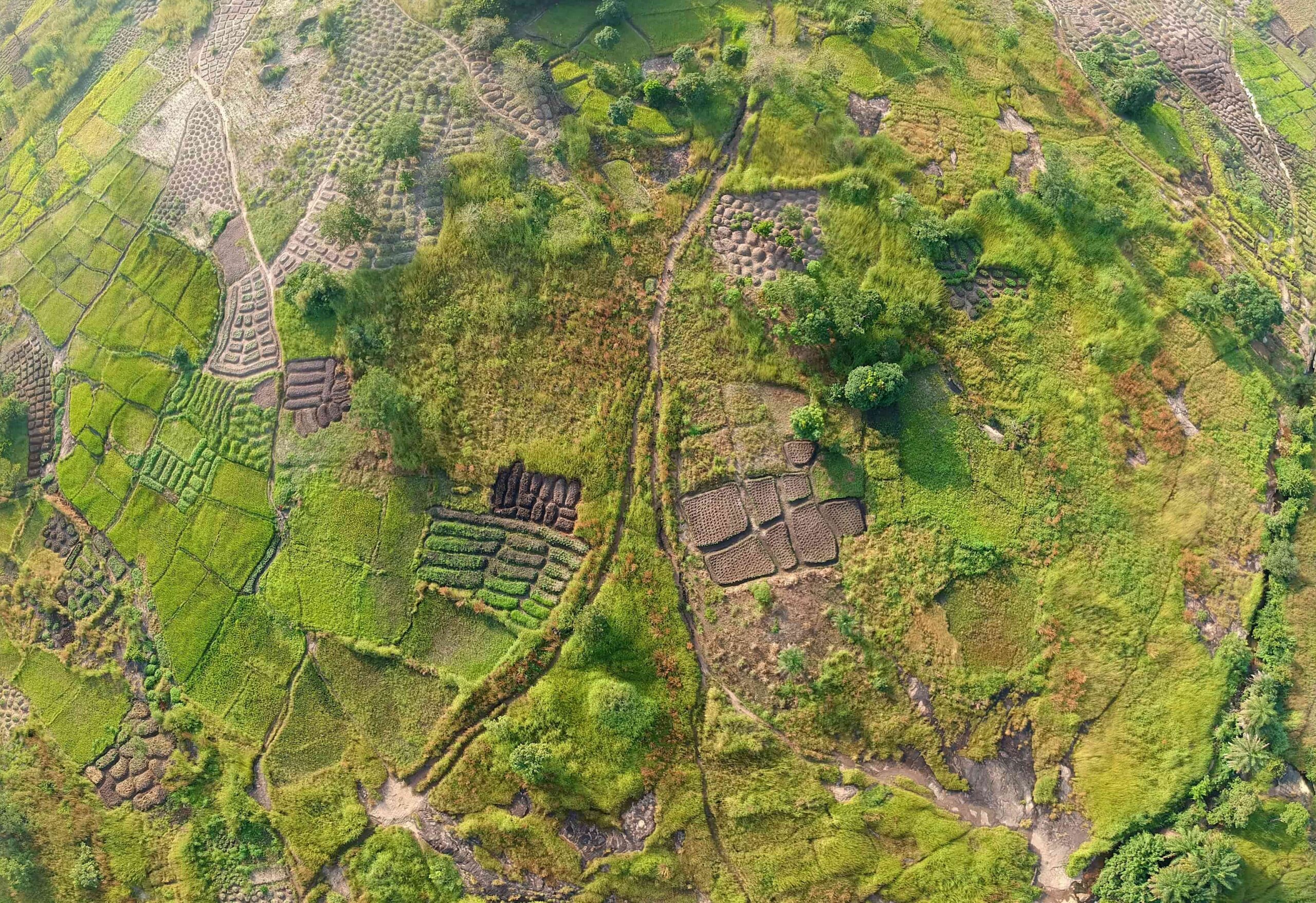

Day 6
Head to Mokebounyi
After a hearty breakfast, go to Mokebounyi and Voile de la Mariee (Wedding Veil). After seeing both locations, head back to Conakry for the night. Morning tours often include stops at Mokebounyi and Voile de La Mariee. When you’re done, return to Conakry. You’ll have the rest of the day at your own to do anything you like—eat, sleep, explore the city, shop for souvenirs, etc. However, always stay alert and do not walk alone at night.
Day 7
Last Hours…
Explore the city’s many attractions, including the National Museum, Cathedral, and Kakimbon caverns. The early afternoon journey back to your accommodation will give you time to freshen yourself before your next departure. You will spend the day sight-seeing in Conakry, seeing attractions including the Guinea National Museum, Cathedral, Kakimbon Caves, and more. You’ll have some downtime to readjust at the hotel after your excursion. You will next board a bus to Xiangkao Airport to check in for your flight out of Guinea.

The Most Popular Food in Guinea
The food of Guinea is comparable to that of its neighbors because it is also of West African heritage. French and Portuguese influences may be seen in the cuisine due to the country’s colonial past, especially in the region near Guinea-Bissau. Baguette sandwiches and the French-inspired coupé-coupé may be among the options (smoked bbq meats). Although corn is widely consumed in Guinea, it is prepared and seasoned in very different ways across the country. The menu included tapalapa bread, boiling cassava leaves, fufu, jollof maize, and maafe. Guinea is home to a wide variety of cuisines and cultural traditions, and rice plays a central role in many of them. Common practice in the countryside is to eat with one’s hands from a communal plate while enjoying the outdoors. Desserts are rarely consumed. The success of Guinean food on international export markets has led to its increased visibility and the availability of Guinean restaurants in New York and elsewhere.
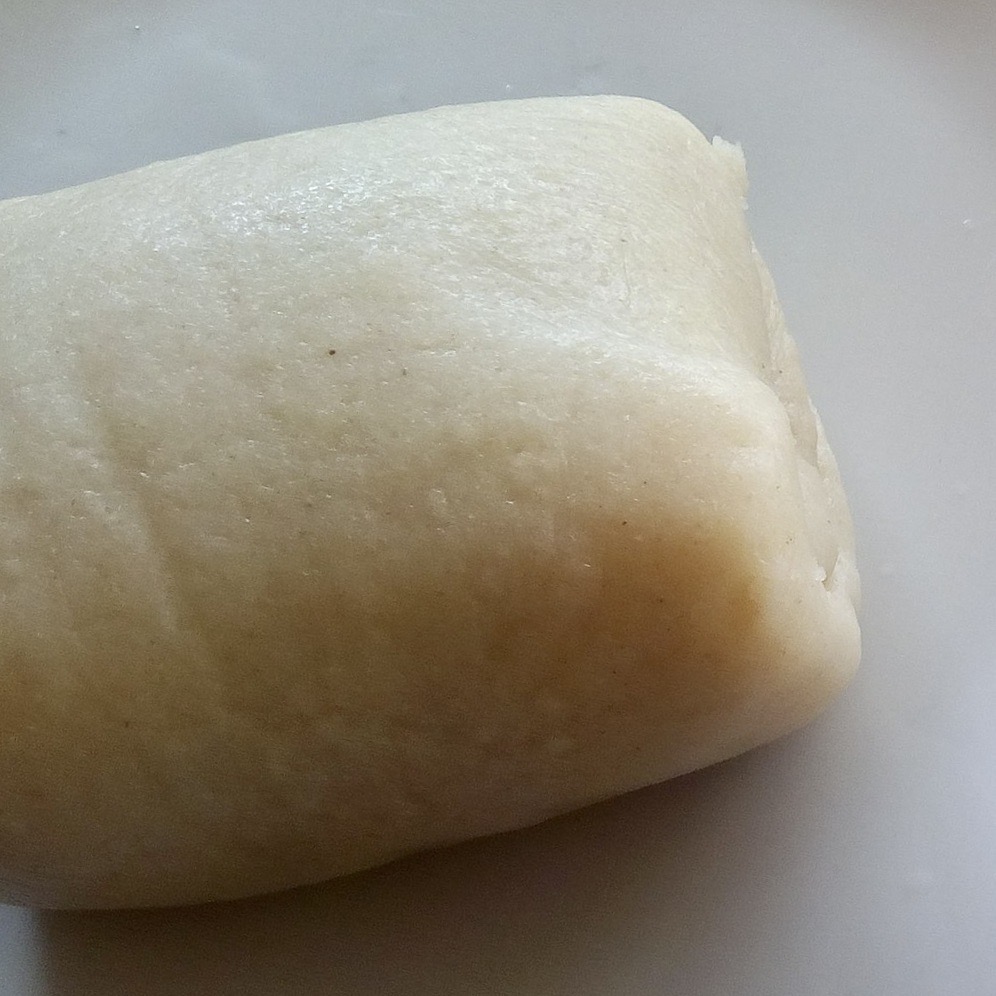
Fufu
If you want to eat and run, fufu is the most popular dish in West Africa. It’s a full meal that’s easy to prepare and goes a long way in feeding a crowd because it’s excellent and takes very little time. It’s served with a rich, flavorful sauce or soup. A soup or stew that is both filling and flavorful is used in the preparation. People will often use their hands to devour the cassava-based white mass with accompanying soup or other foods.
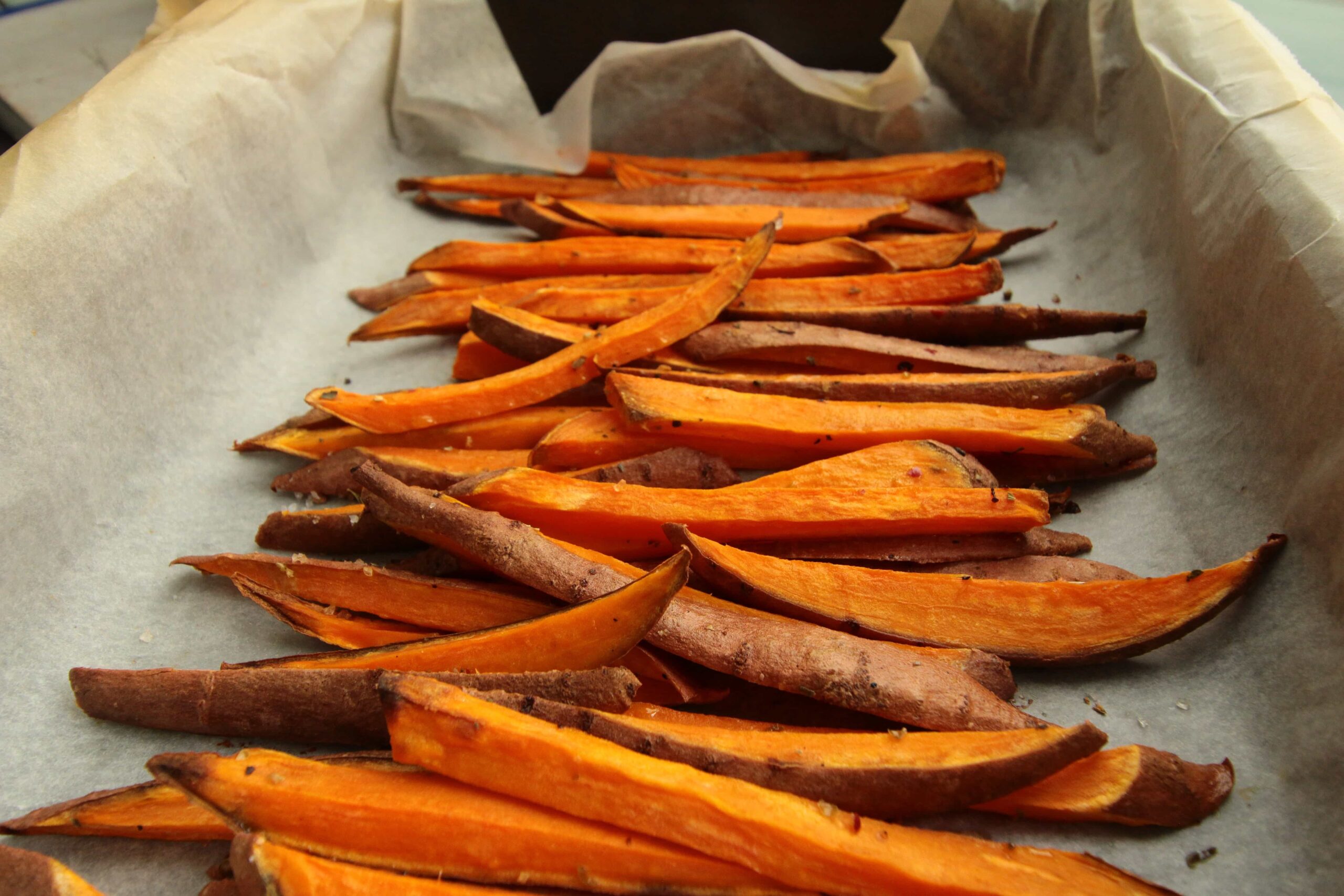
Patates
Multiple cuisines and cultures make use of fried sweet potatoes, with the most well-known example being the French fry-like sweet potato fry. Patates are what you call fried sweet potatoes in Guinean cuisine. You can find this dish sold at stands and marketplaces all over the place, and it’s perfect for a quick bite on the go.

Mango Rafalari
Mangoes are next on the menu, and they’ll be fried. The sweet mango and sour-spicy sauce in Mango Rafalari will stimulate your taste buds. During the mango season in Guinea, this dish is eaten nearly every night. Pick a nice, ripe “mango séni.” Mangoes, especially very large ones that have been “transplanted,” can also be used.

Konkoé
One type of traditional African food is called konkoé, and it gets its flavoring from Guinea. Vegetables such onions, aubergines, garlic, cassava, potato, carrots, tomatoes, and spring onions are combined with smoked catfish, gravy granules, and palm oil in this dish. When the sauce has reduced and thickened, the fish and vegetables are ready. Traditionally, white rice is served with a dish of konkoé.
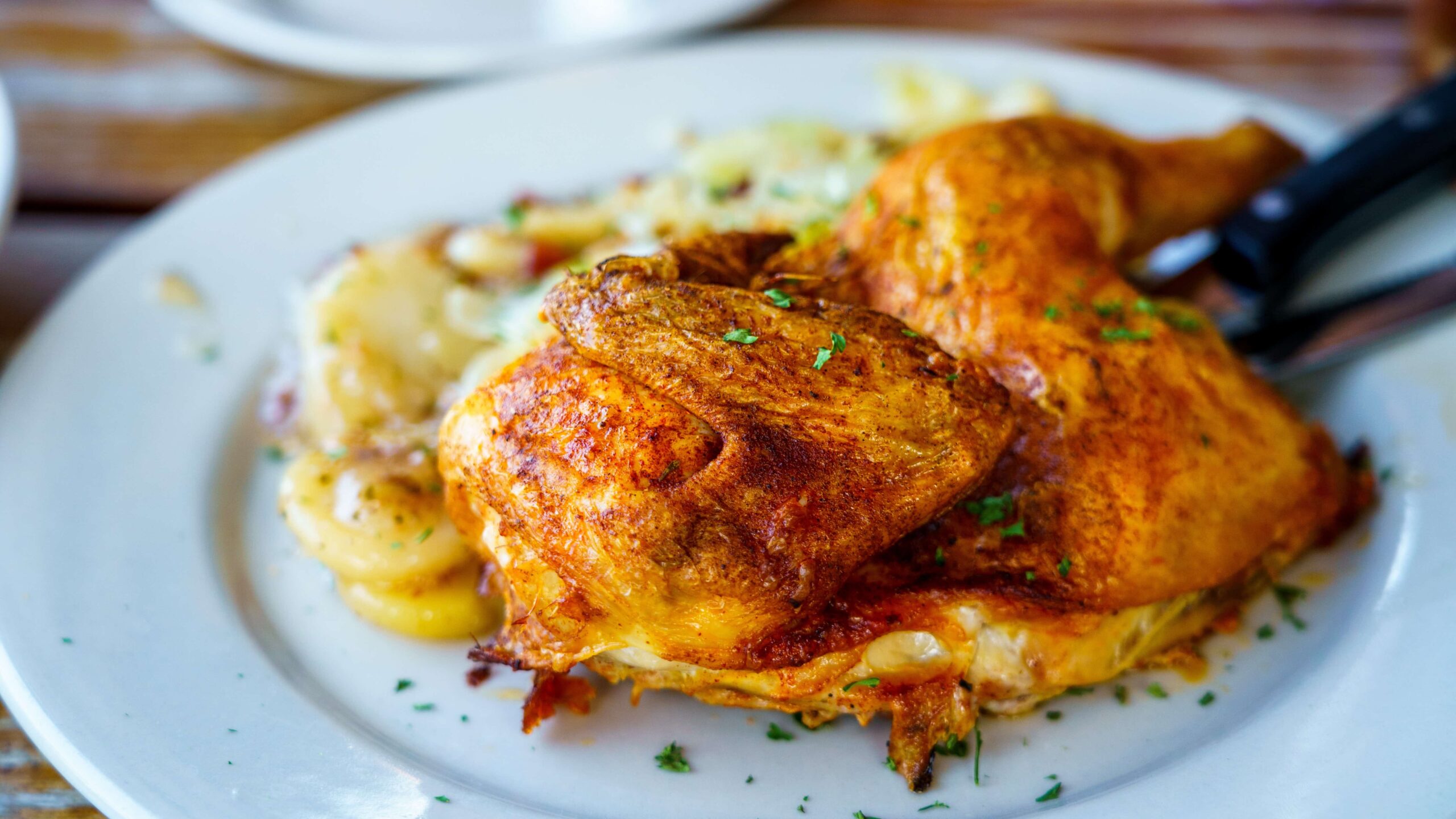
Poulet Yassa
Poulet Yassa, a common chicken dish in the West African region, is simple but delicious. The native African birds in this region are known for having tough meat, but a special treatment with onions and lemons makes them more palatable. It’s called the national dish of Guinea, yet it’s really made in neighboring nations like Senegal.
What's the Travel Budget for Guinea
Flights
- Flights start at roughly $150 from nearby countries. Tickets however on average cost around $750 and can cost way more depending on which class and from which country you depart from.
Accommodation
- Nomad Backpacking style travelers can expect to spend around $130 for a week
- Budget travelers can expect to spend around $210 for a week
- Mid-range travelers can expect to spend around $400 for a week
- Luxury travelers can expect to spend around $750 for a week
Food Budget (Three meals and drinks)
- Nomad Backpacking style travelers can expect to spend around $12 per person per day
- Budget travelers can expect to pay around $20 per person per day
- Mid-range travelers on average would cost $25 to $35 per person per day
- Luxury travelers can expect to pay around $40 to $70 per person per day
Overall Budget Styles (Not including Flights, Tours, Transportation, or Car Rental)
- Nomad Backpacking style travelers can expect to spend roughly $270 for a week
- Budget travelers can expect to spend close to $410 for one person for a week
- Mid-range travelers can expect to spend approximately $780 for one person for a week
- Luxury travelers can expect to spend around $1,430 for one person for a we7
Flights
- Flights start at roughly $150 from nearby countries. Tickets however on average cost around $750 and can cost way more depending on which class and from which country you depart from.
Accommodation
- Nomad Backpacking style travelers can expect to spend around $130 for a week
- Budget travelers can expect to spend around $210 for a week
- Mid-range travelers can expect to spend around $400 for a week
- Luxury travelers can expect to spend around $750 for a week
Food Budget (Three meals and drinks)
- Nomad Backpacking style travelers can expect to spend around $12 per person per day
- Budget travelers can expect to pay around $20 per person per day
- Mid-range travelers on average would cost $25 to $35 per person per day
- Luxury travelers can expect to pay around $40 to $70 per person per day
Overall Budget Styles (Not including Flights, Tours, Transportation, or Car Rental)
- Nomad Backpacking style travelers can expect to spend roughly $270 for a week
- Budget travelers can expect to spend close to $410 for one person for a week
- Mid-range travelers can expect to spend approximately $780 for one person for a week
- Luxury travelers can expect to spend around $1,430 for one person for a we7
Flights
- Flights start at roughly $150 from nearby countries. Tickets however on average cost around $750 and can cost way more depending on which class and from which country you depart from.
Accommodation
- Nomad Backpacking style travelers can expect to spend around $130 for a week
- Budget travelers can expect to spend around $210 for a week
- Mid-range travelers can expect to spend around $400 for a week
- Luxury travelers can expect to spend around $750 for a week
Food Budget (Three meals and drinks)
- Nomad Backpacking style travelers can expect to spend around $12 per person per day
- Budget travelers can expect to pay around $20 per person per day
- Mid-range travelers on average would cost $25 to $35 per person per day
- Luxury travelers can expect to pay around $40 to $70 per person per day
Overall Budget Styles (Not including Flights, Tours, Transportation, or Car Rental)
- Nomad Backpacking style travelers can expect to spend roughly $270 for a week
- Budget travelers can expect to spend close to $410 for one person for a week
- Mid-range travelers can expect to spend approximately $780 for one person for a week
- Luxury travelers can expect to spend around $1,430 for one person for a we7
Flights
- Flights start at roughly $150 from nearby countries. Tickets however on average cost around $750 and can cost way more depending on which class and from which country you depart from.
Accommodation
- Nomad Backpacking style travelers can expect to spend around $130 for a week
- Budget travelers can expect to spend around $210 for a week
- Mid-range travelers can expect to spend around $400 for a week
- Luxury travelers can expect to spend around $750 for a week
Food Budget (Three meals and drinks)
- Nomad Backpacking style travelers can expect to spend around $12 per person per day
- Budget travelers can expect to pay around $20 per person per day
- Mid-range travelers on average would cost $25 to $35 per person per day
- Luxury travelers can expect to pay around $40 to $70 per person per day
Overall Budget Styles (Not including Flights, Tours, Transportation, or Car Rental)
- Nomad Backpacking style travelers can expect to spend roughly $270 for a week
- Budget travelers can expect to spend close to $410 for one person for a week
- Mid-range travelers can expect to spend approximately $780 for one person for a week
- Luxury travelers can expect to spend around $1,430 for one person for a we7
If you want to know what to pack, read this list below:
- This is a conservative West African country with warm weather that tends to get hot in the summer and rainy in the winter, dress accordingly
- Raincoat or Light Waterproof Jacket
- Hiking Boots or Sturdy Sneakers (Shoes You Don’t Mind Getting Wet)
- Sunscreen
- Insect Protection – Repellent and Clothing
- Sunglasses and Sun Hat
- Water Shoes
- Beach Towels/Sarong
- Dry Bag
- Money Belt or Cross Bag
- Portable Medical Kit
- Flashlight or Headlamp
- Copies of your passport.
- Get all the needed vaccinations before traveling
- A power bank is a must in any travel.
- Always have some cash with you just in case there are no ATMs and if you are dealing with a business that solely accepts cash
- Get yourself an adapter for your gadgets
- 1 toothbrush
- 1 tube of toothpaste
- 1 razor
- 1 package of dental floss
- 1 small bottle of shampoo
- 1 small bottle of shower gel
- 1 towel
- Deodorant
- Band-Aids
- Hydrocortisone cream
- Antibacterial cream
- Earplugs
- Tylenol
- Hand sanitizer (germs = sick = bad holiday)
- A key or combination lock
- Zip-lock bags
- Plastic bags (great for laundry)
- Universal charger/adaptor
- LifeStraw (A water bottle with a purifier)
- 1 dry shampoo spray & talc powder
- 1 hairbrush
- Makeup you use
- Hairbands & hair clips
- Feminine hygiene products
Clothing For Boys
- 1 pair of jeans or khaki pants
- 1 pair of shorts
- 1 bathing suit
- 5 T-shirts
- 1 long-sleeved T-shirt
- 1 pair of flip-flops
- 1 pair of sneakers
- 6 pairs of socks
- 5 pairs of boxer shorts
Clothing For Girls
- 1 swimsuit
- 1 sarong
- 1 pair of stretchy jeans
- 1 pair of leggings
- 2-3 long-sleeve tops
- 2-3 T-shirts
- 3-4 spaghetti tops
- 1 light cardigan
Want to plan your own trip, here are some of the best resources that can help you
- Skyscanner – They search small websites and budget airlines that larger search sites tend to miss. They are hands down the number one place to start.
- Momondo – This is another favorite flight search engine because they search such a wide variety of sites and airlines. Always check here too.
- Booking.com – The best all-around booking site that constantly provides the most affordable and lowest rates. They have the widest selection of budget accommodation.
- Couchsurfing – This website allows you to stay on people’s couches or spare rooms for free. It’s a great way to save money while meeting locals who can tell you the ins and outs of their city. The site also lists events you can attend to meet people (even if you’re not staying with someone).
- Intrepid Travel – If you want to do group tours, go with Intrepid. They offer good small group tours that use local operators and leave a small environmental footprint.
- Grassroots Volunteering – For volunteering, Grassroots Volunteering compiles a list of good local volunteer organizations that keep the money within the community.
- Get Your Guide – Get Your Guide is a huge online marketplace for tours and excursions. They have tons of tour options available in cities all around the world, including everything from cooking classes, walking tours, street art lessons, and more! It has the world’s largest collection of things to do with more than 30,000 activities in 7500 destinations.
- SafetyWing – Safety Wing offers convenient and affordable plans tailored to digital nomads and long-term travelers. They have cheap monthly plans, great customer service, and an easy-to-use claims process that makes it perfect for those on the road.
- Trip Advisor: Check the reviews and then book your accommodation. TripAdvisor is where you go when you want to compare prices with multiple accommodation providers.
- VRBO: is the main search engine to use when you are looking for a home or apartment rental. It can sometimes be cheaper than hotels and it is the best way to stay in areas that offer a more local feel.
- Hostelworld: With one of the largest databases of hostels in the world, Hostelworld is the go-to site when you are looking for budget accommodation.
- Rome 2 Rio: If you want to see how to get somewhere by plane, train, bus, ferry, or car Rome2Rio lays it all out for you as well as related costs.
- World Nomads Insurance: When traveling you should always have travel insurance. We have found the best bang for your buck is by far World Nomads.
Final Thoughts on Guinea
Guinea is appealing for many reasons, despite its shortcomings, including its rich history and culture, which can be seen in its traditional and ancient buildings and rural landscapes, its unusual and beautiful landmarks, not to mention Mount Nimba Strict Nature Reserve, a UNESCO World Heritage Site, and the conservation Zones teeming with wildlife. The unbelievable warmth the locals give and the warm weather, its exciting events and festivities, and its vivid picture-perfect surroundings of highlands and pristine forests, ideal for spotting the beautiful wildlife. Evidence suggests that Guinea’s history extends back much further than 3,000 BC. A piece of a fallen African civilization and a meeting point for a number of different cultures; one of the top travel destinations. With its stunning scenery, wide variety of wildlife, and intriguing historical sites, Guinea may not be a popular tourist destination, but activities including its vast forests or witnessing the beautiful sunsets in the highlands, or a beach may intrigue you. Are you planning on going on a trip to Guinea?
Have you ever been to Guinea? Post your thoughts, questions, and concerns down below.